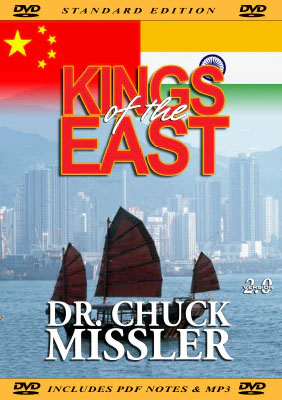[Ed note: Last month we highlighted the ''rise of China'' in our article, ''The Kings of the East.'' This month well take a look at what may be an overlooked giant rising in the East: India.]
President Bush's trip to India last month showcased that country's sizzling rise to become a top producer in the global marketplace: India has the second fastest-growing major economy in the world over the past 15 years and in recent years trails only China and the United States in its contribution to global gross domestic product (GPD) growth.
Before Bush's visit - and the media spotlight that follows him - few people realized the remarkable emergence of India in the global technological culture. Yet, their research and development centers are sprouting everywhere and are the seedbeds of the most advanced software platforms, multimedia devices, and other next-generation innovations.
Major companies, such as Motorola, Hewlett-Packard, and Cisco Systems, are looking to laboratories in India for their most advanced product developments. Their advanced 3-D computer simulations are tweaking designs for car engines and aircraft wings for clients like General Motors and Boeing. India's Bangalore Research Hub is spawning companies that produce their own chip designs, software, and pharmaceuticals.
Daniel Sheinman, Cisco Systems senior vice president for corporate development, declares, ''We came to India for the costs, we stayed for the quality, and were now investing for the innovation.''
Just as China has emerged as a mass manufacturer, India is emerging as a giant in services. Technical and managerial strengths in both China and India are becoming more important that cheap assembly labor. And, their relative strengths are complementary, not competitive. For example, China has excelled in mass manufacturing, with multi-billion-dollar electronics and heavy industrial plants; India has specialized in software, design, services, and precision industry. Their efficiency in back-office processing alone is legendary and outsourcing such work is expected to quadruple by 2010 to over $56 billion per year!
These two emerging giants will transform the entire global economy. China and India account for one-third of the worlds population. For the past two decades, China has been growing at 9.5% per year, and India at 6% per year. Both are projected to continue at an annual rate of 7-8% for at least the next ten years. By mid-century, China should overtake the U.S. as #1. Together, China and India could account for almost half of the total global output.
This is, in some ways, analogous to 19th century America, when a young, driven workforce grabbed the lead in agriculture, apparel, and the high-tech innovations of that era: steam engines, the telegraph, and electric lights. Similarly, these two emerging giants are positioning themselves at the vanguard of the critical technologies of the coming decades.
India's younger workforce will give it a chance to catch up to China. Due to its one-child policy, Chinas working age population will peak at 1 billion in 2015 and then shrink steadily. India has nearly 500 million people (twice the population of the U.S.) under the age of 19 and higher fertility rates. By mid-century, India is expected to have 1.6 billion people, 220 million more workers than China.
We will review more of these developments in our featured briefing package, The Kings of the East. We should all aspire to be like the ''sons of Issachar,'' who understood the times and knew what they had to do (1 Chr 12:32).






